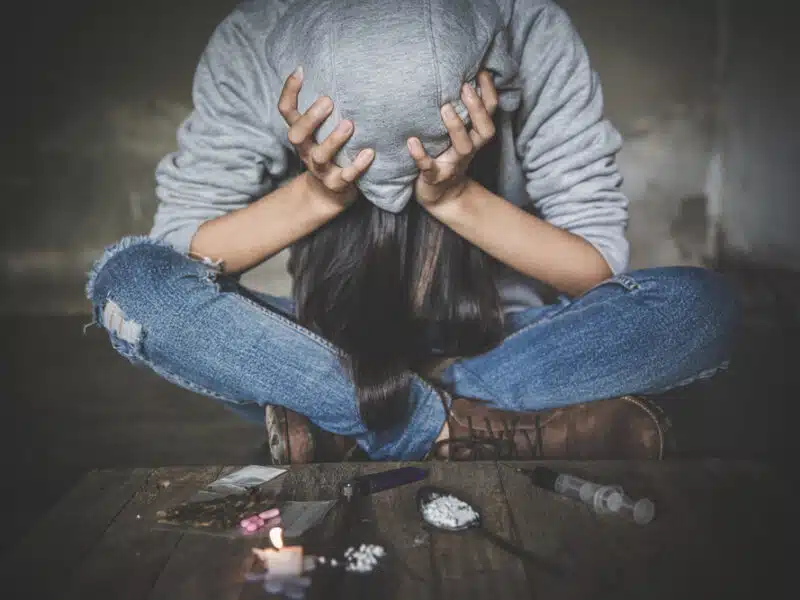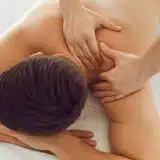Massage Therapy and Its Role in Addiction Recovery

Unlocking Healing: The Powerful Influence of Massage Therapy in Overcoming Addiction
What is Massage 23rd Jun, 2023
Addiction is a vicious beast that may rob a person of their health, personal relationships, professional life, mental calm, and financial stability.
The pursuit of successful treatment options has brought us to the forward-thinking terrain of holistic healing in drug rehab, which is generating quite a stir with its astonishing outcomes.

The use of modalities such as massage therapy has produced outcomes in addition to well-established treatments like medication-assisted detox.
Elevating the Body’s Natural Healing Powers Through Massage Therapy
Massage therapy isn’t just about calming the senses with soothing melodies and aromatic candles. It is a potent, complementary healing technique that employs a range of bodywork modalities designed to quiet the mind and release bodily tension.
The skill of the therapist is key as they knead, press, and work through the client’s muscles and trigger points in a rhythmic dance of healing.
Different types of massage—such as deep tissue, myofascial release, Swedish, or cranial sacral massage—provide an array of therapeutic benefits depending upon the individual’s unique needs. The therapist’s touch not only stimulates the muscles but also the skin, the body’s largest sensory organ.
This sensory stimulation triggers the central nervous system to release dopamine, our natural “feel-good” chemical. Research points to the promising potential of this mind-body connection, facilitated by massage therapy, in promoting self-awareness and potentially preventing relapse.
Recommended:
What is Therapy?
The Science of Massage Therapy in the Treatment of Addiction
Massage treatment is more than just sitting on a table with calming music and scented candles. This complementary treatment includes a variety of bodywork techniques to calm the mind and relieve physical tension.
A trained therapist uses rhythmic motions to manipulate the client’s muscles and trigger points. The therapy might include a variety of modalities adapted to the individual’s needs, such as deep tissue, myofascial, Swedish, or cranial sacral massage.
Massage therapy’s power manifests not only via muscle activation, but also through skin stimulation. The skin, our body’s greatest sensory organ, transmits messages to the central nervous system, causing dopamine, the body’s natural feel-good hormone, to be released.
According to recent studies, massage treatment improves self-awareness and may prevent relapse by facilitating the mind-body connection.

The Unusual Function of Massage Therapy in Drug Rehabilitation
The basic treatment approaches used in drug rehab call for the patients’ complete commitment and active participation. This might entail getting therapy, going to 12-step gatherings, or picking up new abilities. However, massage treatment stands out since all that is required of the patients is relaxation.
Patients who enter drug rehab frequently have a heavy load of mental and emotional strain. A nervous addict is more likely to turn to their go-to drug for comfort. In addition to reducing stress, massage treatment also causes the natural release of dopamine that addiction frequently seeks through artificial ways.
Additionally, massage treatment speeds up the detox process by helping to remove the toxins acquired during addiction.
The Integrated Drug Rehabilitation Approach
Holistic treatment programs, such as The Recovery Village, provide a diverse range of treatment options aimed at treating both the mind and the body. Medication-assisted detox, for example, can help to alleviate the uncomfortable symptoms of drug or alcohol withdrawal.
Different sorts of treatment help to create long-term healing skills. Holistic treatments, on the other hand, help with stress release and immune system support.
Massage Therapy’s 7 Hidden Gems: Recovery Benefits

Massage therapy may be a good option if you’re interested in a holistic approach to dealing with drug misuse difficulties.
Although it is not a widespread practice in addiction treatment, massage therapy has various benefits for those in recovery.
1. Massage Treatment
By its squeezing and pushing actions, assists in eliminating lactic acid from muscles and increasing blood flow to the limbs. The increased vascular function lasts for several days after the massage. Improved circulation also helps with detoxification, enabling for more effective clearance of harmful waste from the body.
2. Endorphin Release
After detox, the body’s neurochemistry need time to rebalance. Massage treatment has been demonstrated to enhance beta-endorphin levels in the blood, providing a natural way for patients in recovery to feel reinvigorated.
3. Reduces Chronic Pain
Regular massages can help relieve pain, improve sleep, and boost mood and energy throughout the day. This is especially helpful for patients suffering from opiate addiction caused by chronic pain.
4. Stress Reduction
Chronic stress can impair the immune system and cause mood swings. Massage treatment reduces cortisol levels, allowing persons in recovery to feel more comfortable and in command of their newfound sobriety.
5. Addresses Co-Occurring Disorders
For individuals with co-occurring illnesses including anorexia, bulimia, depression, bipolar disorder, or PTSD, massage therapy can trigger the body’s relaxation response, enhancing the effectiveness of the overall treatment approach.
6. Helps to Overcome Fear of Touch
Massage therapy can assist persons who have experienced physical or sexual abuse to overcome their fear of touch by teaching the brain to equate physical contact with more pleasant experiences.
7. Increases Self-Awareness
Regular massage treatments will help you become more aware of your body, allowing you to create effective tactics for regulating urges and preventing relapse.
Blending Massage Therapy into Your Recovery Journey
While massage therapy is not a cure-all for addiction, its numerous advantages can supplement a larger, evidence-based drug and alcohol treatment program. A talk with your counselor about including massage therapy in your treatment plan might pave the way.
A hopeful and well-informed viewpoint can serve as a spark for a transforming path toward healing. Accept the possibilities and make the first step toward healing, growth, and reclaiming your life.
Recommended:
What Is Swedish Massage? How Does Deep Tissue Compare?
The Bottom Line
The journey of addiction recovery is undeniably challenging, but it’s also an opportunity for transformation and growth. Integrating massage therapy into your recovery plan introduces a therapeutic tool that nurtures both body and mind.
So, as you navigate your path to recovery, remember the power of touch. Lean into the healing potential of massage therapy. Let its rhythm help you release, relax, and recover. This holistic approach might just be the soothing balm your recovery journey needs, a touch of hope amidst the trials.
There’s beauty in healing, and with each therapeutic touch, you’re not just recovering—you’re rediscovering yourself. Here’s to the transformative power of massage therapy and its promising role in addiction recovery. The path to a brighter, healthier, and more fulfilled life is within reach. Embrace it with optimism, courage, and resilience.
FAQs
How does massage therapy help with recovery?
Massage therapy promotes relaxation, reduces muscle tension, and improves circulation, aiding in the body’s recovery process.
What is the role of massage therapy?
Massage therapy plays a vital role in enhancing physical and mental well-being, reducing pain, and supporting recovery.
What type of massage is best for recovery?
Swedish massage and sports massage are commonly used for recovery due to their relaxing and therapeutic effects.
Which therapy is often used for those suffering from an addiction?
Cognitive Behavioral Therapy (CBT) is frequently used for addiction treatment to address underlying issues and change behaviors.
What is the most successful treatment for addiction?
The most successful treatment for addiction varies per individual but often involves a combination of therapy, support groups, and medication-assisted treatment.
















